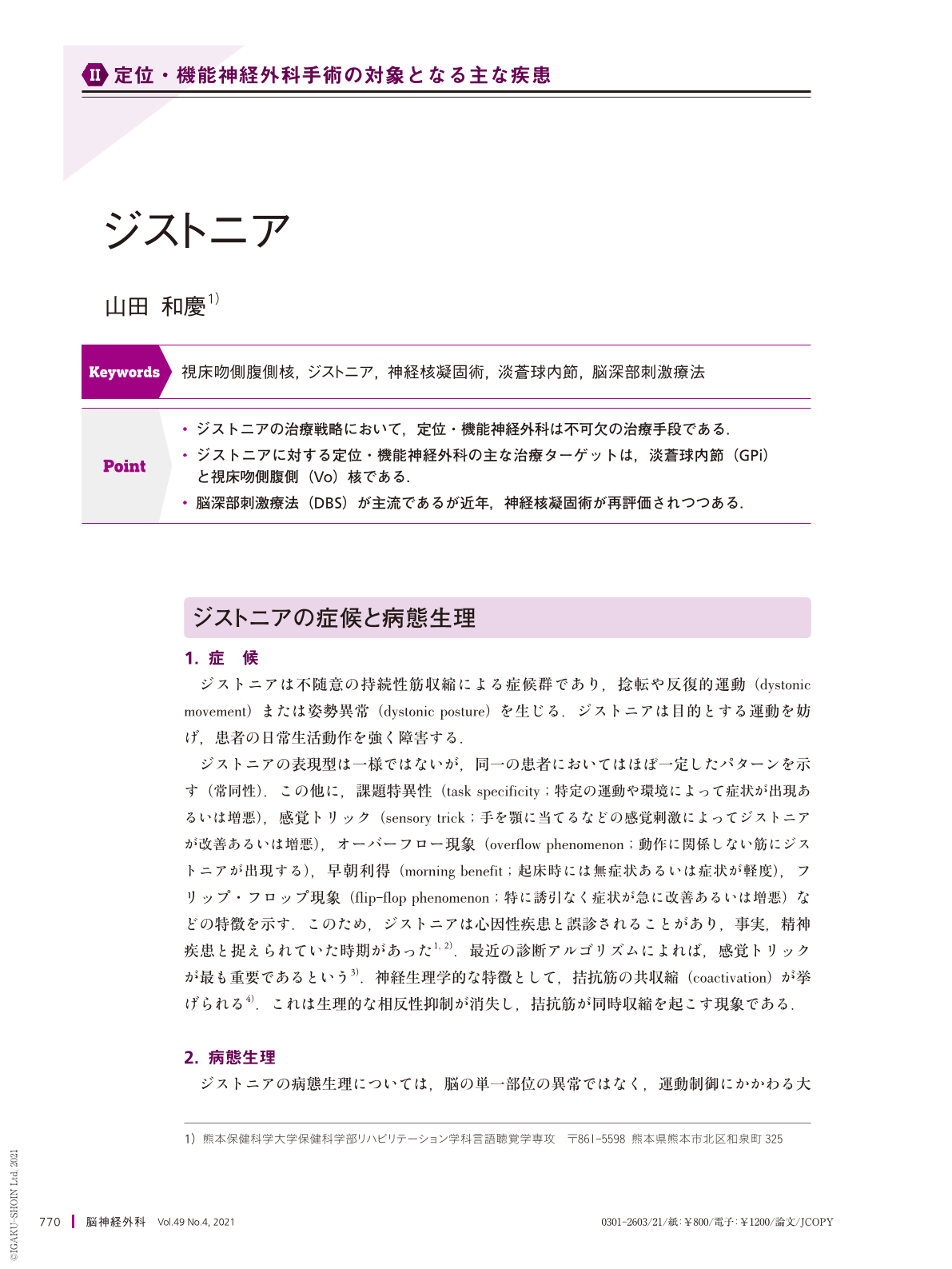Japanese
English
- 有料閲覧
- Abstract 文献概要
- 1ページ目 Look Inside
- 参考文献 Reference
Point
・ジストニアの治療戦略において,定位・機能神経外科は不可欠の治療手段である.
・ジストニアに対する定位・機能神経外科の主な治療ターゲットは,淡蒼球内節(GPi)と視床吻側腹側(Vo)核である.
・脳深部刺激療法(DBS)が主流であるが近年,神経核凝固術が再評価されつつある.
Dystonia is a movement disorder characterized by sustained or intermittent muscle contractions causing abnormal, often repetitive, movements or postures. Currently, dystonia is defined as a network disorder involving the basal ganglia, cerebellum, thalamus, and sensorimotor cortex. Considering that it is refractory to medical therapy, functional neurosurgery is indispensable in the treatment strategy for dystonia. Functional neurosurgery may improve dystonic symptoms by suppressing abnormal neuronal activity in the motor loop network. Deep brain stimulation(DBS)of the globus pallidus internus(GPi)is a useful surgical treatment for genetically defined and primary dystonia involving the axial musculature. Thalamic ventral oral(Vo)nucleus surgery is recommended for cases of peripheral dystonia, such as writer's cramp and other occupational types of dystonia. However, pallidal DBS is less effective in cases of secondary dystonia, with the exception of tardive dystonia. Recent studies have reevaluated that ablation surgery is the last-resort treatment when DBS must be discontinued for certain conditions. Magnetic resonance-guided focused ultrasound(MRgFUS), a novel, incision-free, ablation technique, is currently used for the treatment of focal hand dystonia.

Copyright © 2021, Igaku-Shoin Ltd. All rights reserved.


